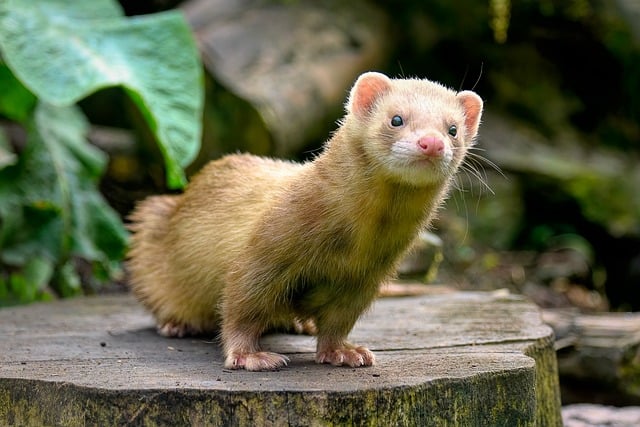While mustelids like ferrets, weasels, and minks are often seen as small, innocuous creatures, the forest polecat is a predator that should not be underestimated. Ranging throughout northern and central Europe as well as parts of Asia, this elusive mustelid lives up to its fierce reputation as a skilled hunter within its forested woodland habitat.

Photo source:
Measuring approximately 50cm long including tail and weighing around 1kg on average, the forest polecat carries its lean, sinewy physique with confidence despite its relatively small size. Distinguishable by rusty-brown fur accented with a wide black mask across its face, they are truly adept blenders into almost any forest environment. However, unlike most forest animals that seek cover, polecats are bold hunters who actively stalk their prey throughout both day and night.

Photo source:
As I discovered firsthand while volunteering at a wildlife rehabilitation center, the forest polecat's predatory lifestyle is reflected in its personality. The injured female we had been caring for was continually on high alert despite being confined, emitting hissing snarls if anyone got too near her enclosure. Sharp claws and teeth were clearly meant for bringing down prey, not showing affection! However, their ferocity serves an important ecological role as top-level population controllers of small rodents and lagomorphs within the forest community.

Photo source:
Polecats are fiercely solitary outside of breeding season, claiming large individual territories that they patrol relentlessly. Within these ranges, they employ an array of stealthy hunting methods befitting an expert ambush predator of the woods. Silent stalking, followed by explosive bursts of speed, allows them to successfully catch mammals like voles, mice, and rabbits many times their size. Despite their small frames, polecats have incredible muscular power that, combined with razor-sharp teeth and claws, allows them to subdue struggling prey.
Breeding occurs between February and July, with litters of 3-8 (occasionally up to 12) highly altricial kits born after a gestation period of about 42 days. Females construct nests of dried grass and leaves, well-hidden within rock crevices, hollow trees, or thick brush. At birth, the naked newborns are pink-skinned and blind, totally dependent on the female for nourishment and protection during their first vulnerable weeks of life. Weaning occurs around 7-8 weeks of age, by which point the tan-colored fur has come in and eyes open. sexual maturity is reached by 10-12 months for both genders.
Throughout summer and fall, independent juvenile polecats disperse from parental territories to establish their own. This likely drives an annual period of increased conflicts as young predators challenge territorial holders or encroach onto occupied areas. Injuries sustained during these competitions are believed to be a major cause of mortality for subadult polecats. Only about half will survive to 2 years of age in the wild, with maximum documented lifespan around 5 years.
While secretive and rarely spotted, the forest polecat plays an integral part behind the scenes as a top-tier predator within European woodlands. Their adept hunting abilities and resistance to harsh climates have undoubtedly contributed to the species' success. With continued conservation of their forested habitats, I hope these impressive small predators will remain a fixture within nature's intricate web well into the future.